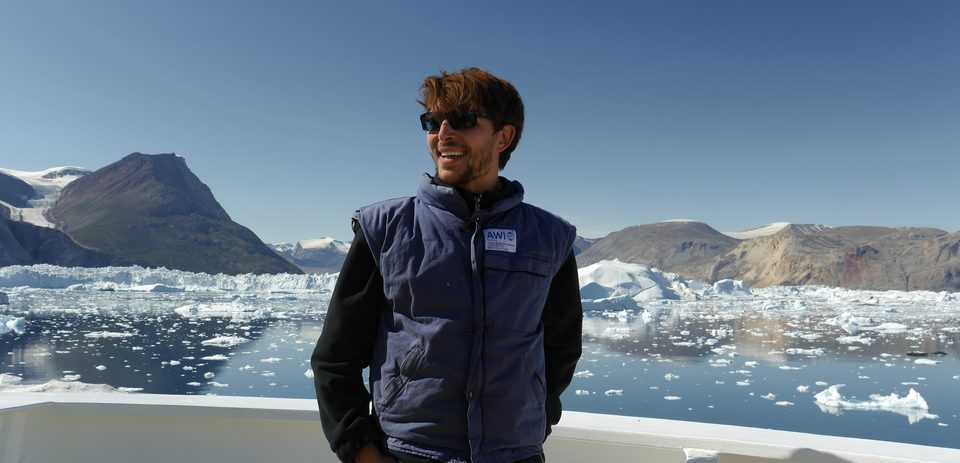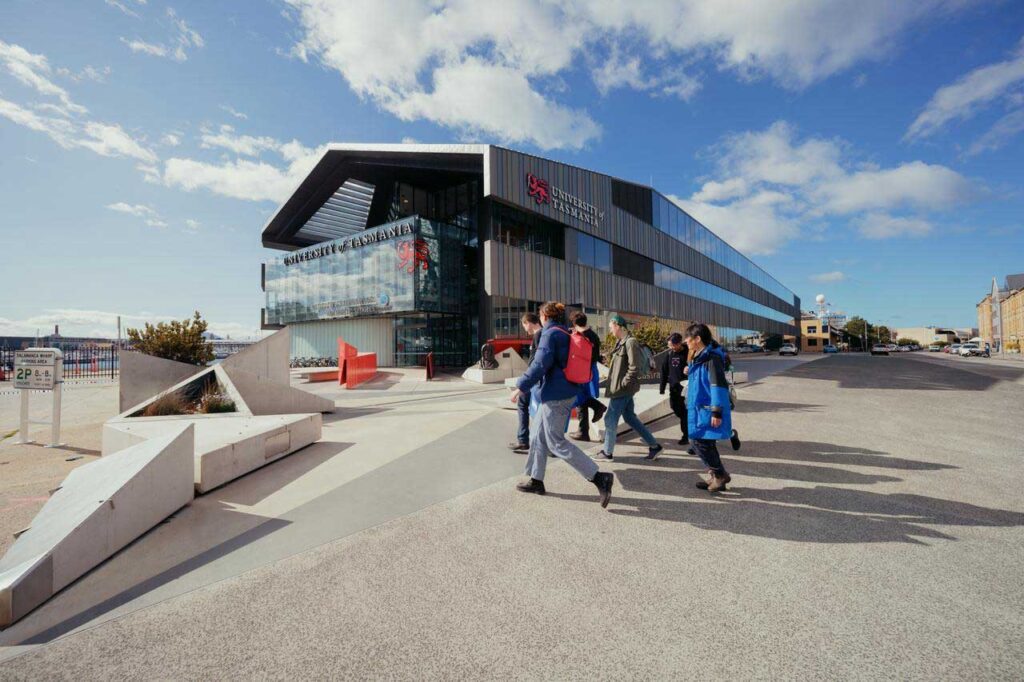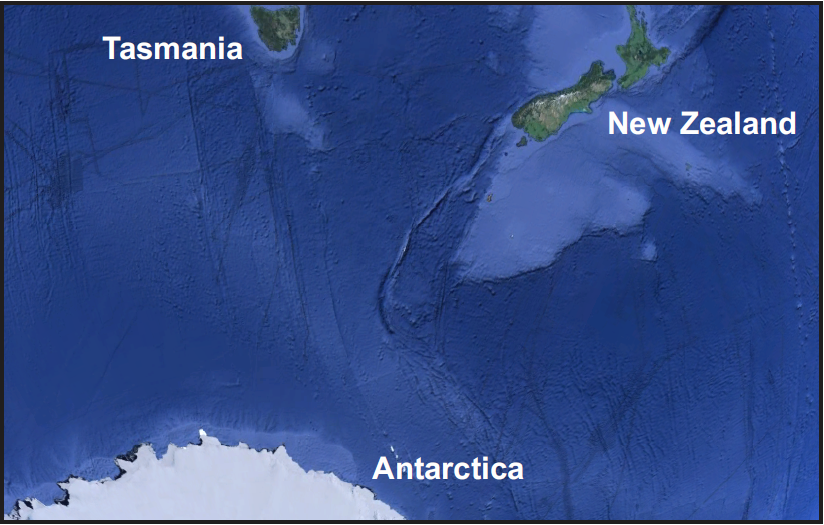Rock Dust And Ocean Chemistry: Exploring Carbon Removal’s Potential and Perils
Professor Lennart Bach
Rock dust applied in marine environments could become a meaningful addition to a portfolio of carbon dioxide removal techniques that collectively can help to mitigate climate change, says marine biogeochemist Lennart Bach.
“In the end, it’s all linked back to rock weathering,” said the University of Tasmania associate professor in Marine Phytoplankton Physiological Ecology at the Institute for Marine and Antarctic Studies. Bach focuses on ocean-based CO2 removal methods to combat climate change, emphasizing geochemical approaches with minimal biological interaction. “The ocean needs to be part of the conversation.”
Bach advocates for research to assess the feasibility, efficiency and environmental safety of methods such as ocean alkalinity enhancement and electrochemical approaches. He highlights challenges (i.e., scalability, unpredictability and trade-offs), aiming to provide fact-based climate mitigation insights. Shifting from lab experiments to a field study in late 2024 and early 2025, his work focuses on carbon sequestration, environmental safety and geochemical efficiency.
“The ocean is relatively underexplored considering its size. With 71 per cent of the Earth’s surface covered in ocean, we must examine its potential role…. It must be part of the discussion.”
It was in Germany that Bach began his academic journey, studying biology with a marine science focus. During his master’s thesis, he explored how ocean acidification impacts phytoplankton calcification, sparking an enduring interest in marine biogeochemistry, which studies elemental cycles like carbon, nitrogen and phosphorus in the ocean.
From 2009 to 2019, he worked at the GEOMAR Helmholtz Centre for Ocean Research in Kiel, investigating the ecological effects of ocean acidification. A pivotal moment came during the Paris Agreement negotiations at COP21 in 2015 when he realized mitigating emissions alone would not suffice to limit global warming.
This realization shifted his research toward exploring solutions for large-scale carbon mitigation. In 2019, Bach moved to the Australian island state Tasmania to continue studying and teaching marine biogeochemistry. “The key to mitigation is emissions reduction and decarbonization, but carbon removal is also essential — and it’s not a small supplement.”
He added: “My interest in all this is how would biological systems such as plankton or seafloor communities respond to these types of preparations. Environmental safety interests me. The other thing is geochemical efficiency.”
Exploring methodology
Distributing rock powder into the ocean is one decarbonization method, but Bach noted its inefficiency due to slow dissolution. However, that does not mean there is no role for rock dust. He highlights methods that split seawater into strong acid (e.g., hydrochloric acid) and strong base (e.g., hydroxide). This approach shifts the carbon chemistry of seawater, converting CO2 into bicarbonate and allowing more CO2 to be absorbed by the ocean.
One argument for this method is the potential to sell hydrochloric acid, creating a circular economy. However, Bach pointed out the limited demand for such byproducts. “If you scaled this process to climate relevance, producing significant acid volumes, there would be no known market for it.”
Therefore, he added, rock dust could play a critical role by neutralizing acid through reactions with silicate or carbonate rocks, mimicking natural weathering. This process reduces acidity while releasing ions such as calcium or bicarbonate.
An area of concern with “alkalinity enhancement” is its potential fertilizing effect on marine life, which could lead to unintended consequences like oxygen-depleted environments and methane production. Bach emphasized the need for further research into this flourishing area. “Marine CO2 removal is an emerging ‘hot topic’. There are lots of people getting interested in it. There are many people worldwide who do the type of research that I’m doing.”
He also highlighted ocean liming, which involves producing lime from calcium and carbonates, distributing it into the ocean to neutralize acidity and enhance CO2 absorption, with the emitted CO2 during production being captured and stored separately. “There are also different combinations of approaches in how you can optimize different things.”
Unbiased assessment
Perpetuating an unbiased academic approach is crucial in evaluating ocean-based carbon removal methods, said Bach. He focuses on presenting facts rather than taking a stance on whether these methods are good or bad. While he sees value in exploring them, outcomes remain uncertain, requiring thorough, objective evaluation.
“When you want to manipulate the ocean system to do what you want it to do — for example, sequester carbon — then if you rely on biology, you rely on a very hard-to-predict, complex system. If you try to manipulate biology, the ultimate outcome is way less predictable than when you, for example, manipulate carbon chemistry.”
Fortunately, he added, Tasmania offers an ideal setting for marine research, with strong infrastructure and easy access to the sea. However, Bach noted that Tasmanians’ deep connection to their unspoiled landscapes and seascapes may make them uneasy about implementing certain carbon removal methods along their coastlines, even if these methods prove harmless.
While he emphasizes the importance of respecting locals’ concerns before making any decisions, the researcher also suggested that the Institute for Marine and Antarctic Studies plays a key role in advancing impactful research, positioning Tasmania to lead on the global marine science stage.
“My goal is to make qualified, fact-based conclusions on whether these approaches could mitigate climate change and whether they’re safe for the environment. ‘Safe’ doesn’t mean zero impact but rather better than the impacts of climate change. We must compare the risks of action versus inaction. ‘No action’ means continued climate change, and climate change is fairly dramatic.”
Carter Haydu is a senior content creator for King Abdullah University of Science and Technology (KAUST) in Saudi Arabia. Since 2012, he also has written about the Canadian energy sector for a Calgary-based trade publication. Carter has been a journalist since 2005, with much of his reporting delving into the environmental issues facing upstream oil and gas. He has written for Remineralize the Earth since 2018.
Support us on Patreon
Thank you for joining us today! Please become a member of RTE and support us on Patreon. Unlike many larger organizations, we work with a team of determined and passionate volunteers to get our message out. We aim to continue to increase the awareness of remineralization to initiate projects across the globe that remineralize soils, grow nutrient dense food, regenerate our forests’ and stabilize the climate – with your help! If you can, please support us on a monthly basis from just $2, rest assured that you are making a big impact every single month in support of our mission. Thank you!










Got something to say?